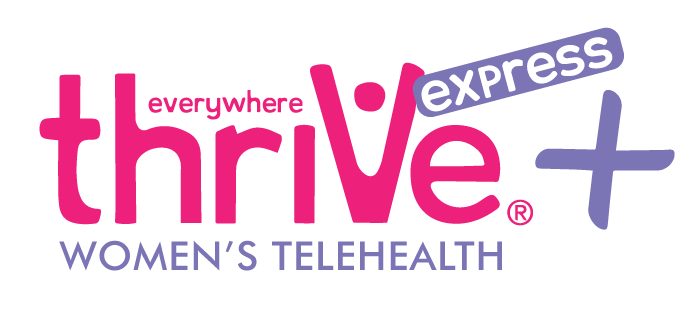Do you have questions about a vaginal yeast infection test? Gotcha. Vaginal health can be confusing. But it doesn’t have to be! It’s one of those topics that’s super important but often gets overlooked. Let’s start with yeast infections. What are they? Do you think you might have one? An infection may seem daunting, but there’s hope. Don’t fret: we’re here to help at Nurse’s Corner at ThriVe+. There’s a way to get treated, and you’re not alone!
So, what’s a yeast infection?
Basically, they’re caused by an overgrowth of the fungus Candida. It’s already hanging out in your body, but sometimes it decides to throw a party it wasn’t invited to — and causes an infection. Yeast infections are pretty common. It’s nothing to be ashamed of! We’re all women here at ThriVe, and we’re here to support you with medically-accurate information..1
Think you might have a yeast infection? Make sure to talk with your OBGYN to get taken care of! You deserve excellent health and confidence. Not sure where to find a provider? We’ll talk about that more later.

Not sure if you have an infection? Let’s talk about the symptoms and other issues that might cause vaginal discomfort.
What are the symptoms?
The symptoms are pretty straightforward: itching, a burning sensation when you pee, and some abnormal discharge. It’s definitely not fun, but the good news is that yeast infections can often be treated with over-the-counter medications.2 Having the symptoms is not enough to diagnose; you need to visit a doctor to be sure. If this is your first yeast infection (or if you’re not sure if it’s a yeast infection), make sure to talk with your doctor.1
But if it’s not a vaginal yeast infection, what else could it be?
What’s bacterial Vaginosis?
Another infection that can cause vaginal discomfort is called bacterial vaginosis (BV).
Now, bacterial vaginosis (BV) is a bit different than a yeast infection. It’s caused by an imbalance of the natural bacteria in your vagina. The main telltale sign is a fishy odor and thin discharge.3 If you have BV, you might need antibiotics prescribed by a doctor.4 So, if you suspect BV, it’s time to give your doc a call.
What about STD symptoms?
BV and yeast infections are both quite common in women.5
There are some other things to keep in mind about a sexually transmitted infection, though. Some STDs have overlapping symptoms with BV and yeast infections. STDs like chlamydia and gonorrhea can cause abnormal discharge and burning during urination.6 Trichomoniasis is another one that can cause itching, soreness, and that annoying burning sensation.6 And there’s genital herpes, which can also make you feel pretty uncomfortable with itching, painful urination, and vaginal discharge.6 If you’ve been sexually active and you’re noticing any of these symptoms, it’s really important to get checked out.
ThriVe actually offers no-cost STD screenings! So you can get peace of mind without worrying about the cost. Please feel welcome to make an appointment so you can get answers and start feeling better as soon as possible. We’re all women at ThriVe+, and there’s no judgment.
How can you avoid vaginal infections?
Alright, let’s talk prevention. You want to avoid yeast infections and BV? Say no to douching — your vagina is a self-cleaning wonder.3 Isn’t that cool? Also, delaying sex can also reduce your risk.1, 3 Postponing sex for now is a great way to boost your confidence in your health and your future. You’re worth it.
Other ways to prevent infections include avoiding scented period products, tight-fitting pantyhose, and frequent bubble baths.1, 3 Keep it simple and natural! Your body will thank you.
Most importantly, stay in tune with your body. Take proactive steps for your vaginal health. If something feels off, don’t hesitate to consult a healthcare provider. ThriVe is here to empower you with accurate info so you can understand your body better. Please seek out a vaginal yeast infection test if you think something’s off. You deserve great health.
So how do you find a great provider?
If this is your first time seeking women’s health care, it can be tricky knowing where to start. Or maybe you’ve moved and need to find a new provider. I get it. No one wants to wait hours in a waiting room, only to be seen for mere minutes by a doctor. Let’s talk about how to find the best provider for you.
1. How do I find a great provider for women’s health?
– Ask for Recommendations: Friends, family, or your primary care physician can often provide great referrals.
– Check Credentials: Ensure the provider is board-certified in obstetrics and gynecology. You want to be sure you’re getting someone who cares for women specifically.
– Read Reviews: Look up reviews online to see what other patients are saying.
– Consider Accessibility: Choose a provider who is conveniently located and has office hours that fit your schedule.
– Comfort and Communication: You should feel comfortable with your provider and be able to communicate openly about your health concerns. If they diagnose you with something, you should be able to ask questions. She will be able to prescribe the medicine you need, if any.
2. What should I expect during my first visit to a women’s health provider?
Your first visit to your regular health provider will likely include a comprehensive health history, a physical exam, and possibly some lab tests. Be prepared to discuss your medical history, any current symptoms, and your lifestyle. This is also a great time to ask any questions you have about your reproductive health. Here at ThriVe, we specialize in no-cost pregnancy tests, ultrasounds, and STD screenings for women experiencing unplanned pregnancies. If we find that you need other care (like routine gynecological exams), we can connect you with great providers in your area. ThriVe does not offer abortion or abortion referrals. 3. How often should I see a women’s health provider?
It’s recommended to have an annual exam. But your provider might suggest more frequent visits if you have specific health concerns or conditions.
4. What services do women’s health providers offer?
A great provider should offer (or be able to connect you with) a range of services including:
– Routine gynecological exams, including yeast infection test
– Pap smears and HPV testing
– STD screenings and treatment
– Any needed prescriptions
– Pregnancy care and prenatal visits
– Pre-abortion screenings
– Menopause management
– Support and information on reproductive health options.,
Here at ThriVe, we specialize in no-cost pregnancy tests, ultrasounds, and STI screenings for women facing unplanned pregnancies.

5. Where can I find no-cost women’s health services?
Look no further than ThriVe. We offer comprehensive, no-cost women’s health services. We cover everything from reproductive health to STD screenings and pregnancy care. Need a pre-abortion screening? We’ve got you covered. It’s a fantastic resource if you’re looking for quality care without the financial burden.
6. What if I need information on abortion or pregnancy options?
ThriVe provides medically accurate info on all your reproductive health options. That includes abortion and pregnancy. We want to empower you with the knowledge you need to make an authentic choice. Your well-being and confidence is the priority.
7. How can I schedule an appointment with ThriVe?
You can easily schedule an appointment by visiting the ThriVe website or giving us a call or filling out our form on our site. It’s easy! We offer flexible scheduling to accommodate your needs, and Telehealth too.
Remember, your health and well-being are the top priorities, so take advantage of the resources available to you through ThriVe. We’re here to support you with medically-accurate information, no matter what. If you think you might be pregnant, please reach out. We’re here for you!
Sources:
1https://www.mayoclinic.org/diseases-conditions/yeast-infection/symptoms-causes/syc-20378999
2Yeast infection (vaginal) – Diagnosis and treatment – Mayo Clinic
3https://www.mayoclinic.org/diseases-conditions/bacterial-vaginosis/symptoms-causes/syc-20352279
4 Bacterial vaginosis – Diagnosis and treatment – Mayo Clinic






